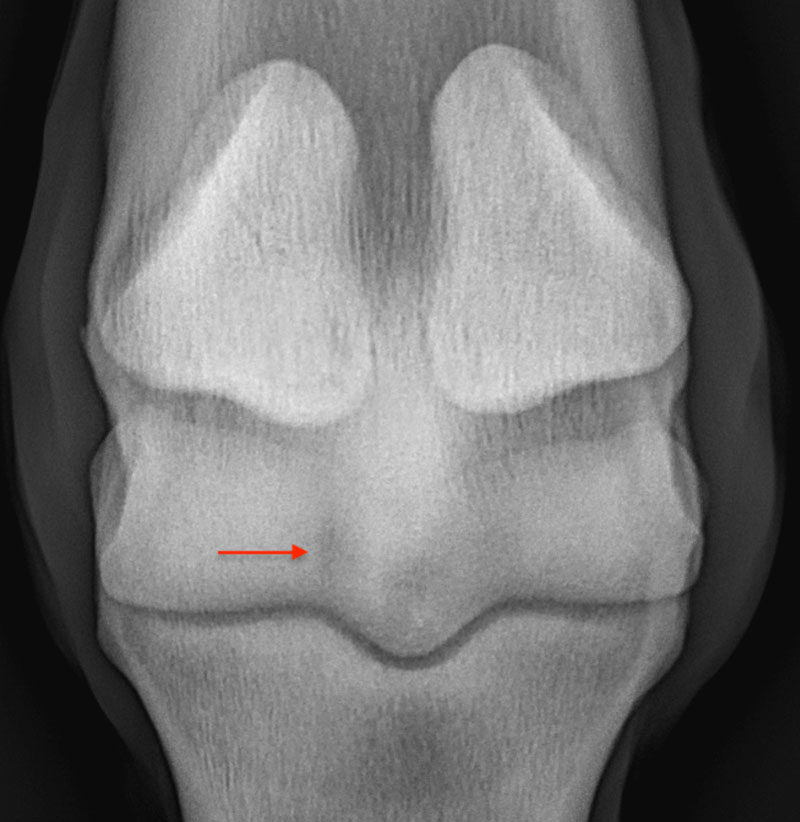
Image courtesy of Dr. P. Ramzan, Rossdales LLP, Newmarket. Dr. P. Ramzan of Rossdales
A meeting of veterinary experts from around the world has stepped closer to defining guidelines for identification of pre-fracture pathology in the racehorse fetlock. The two-day collaborative workshop was hosted by the Jockey Club Estates, Newmarket, and was sponsored by The Gerald Leigh Charitable Trust and the Beaufort Cottage Educational Trust, along with a number of other industry contributors.
Injuries to the racehorse fetlock are thankfully rare, indeed the fetlock injury is one of a number of racecourse musculoskeletal injuries which collectively are estimated to occur in around 8 of every 10,000 race starts in the UK. Serious musculoskeletal injuries are slightly more common in the US and Canada, yet despite recent concerns, research shows 99.8% of starts in those jurisdictions are free of serious musculoskeletal injury. Nevertheless, fetlock injury can be extremely impactful and can be career-ending in some injured horses.
On the first day of the workshop, an expert panel discussed how diagnostic imaging prior to racing can contribute to risk reduction. At the current time, radiography is the most widely available tool used to identify tiny fractures that will heal effectively, providing exercise is reduced. Excitingly, technological progress in advanced imaging, such as standing MRI, standing CT and PET scanning, have the potential to identify pathology even earlier.
At the workshop, the expert panel reviewed existing knowledge and discussed how to generate the research evidence, which is essential if these novel technologies are to gain a place in effective pre-race risk assessment programs.
The following day, a larger group of stakeholders reviewed the expert panel’s conclusions and discussed the need for greater transparency, education and communication among the racing industry stakeholders, all of whom share responsibility for ensuring racing continues to collaborate and enhance racehorse safety and welfare.
The meeting’s chair, Professor Celia Marr, editor of the Equine Veterinary Journal, said, “Racing has an excellent safety record, and the injuries we are talking about are extremely rare. The low prevalence of fetlock injury makes it very difficult to pinpoint the affected individuals. But it is essential that we continue our efforts to do so ever more effectively because if silent injury is not detected it can progress to become much more serious.”
Fred Barrelet, Trustee of Beaufort Cottage Educational Trust, said, “The charities who supported this event are delighted to contribute to advancing veterinary science. The social license which supports racing places responsibility for promoting animal welfare in the hands of the veterinary profession. These are exciting times, and as new technologies come on board and information from these modalities is slotted into existing knowledge of risk factors, we can expect to see more effective risk assessment for individual races.”
Pete Ramzan, a partner at Rossdales LLP, who co-ordinated the workshop, said, “There was a great need to get some of the key experts leading these new technologies together in the same room to correlate their findings and work out how to translate them into tangible reductions in serious injury rates. One of the somewhat unexpected outcomes of the discussions was that despite the fact that we are riding the crest of a wave of technological advances, basic radiography still has much to offer; better education around the application and interpretation of radiographs has real potential to allow vets like myself at the coal face to detect injuries at an early and recoverable stage”.
Peter Stanley, Chairman of the Jockey Club Estates, said, “The Jockey Club Estates are thrilled to support this very important initiative for global horse racing. Racehorse welfare is at the forefront of our activities and is of paramount important to us”.
Beaufort Cottage Educational Trust
Beaufort Cottage Educational Trust is a small charity that aims to support educational projects and events for all those involved in the care of horses and disseminate knowledge of the best veterinary and management practices and thereby enhance horse welfare. BECT works with the Gerald Leigh Charitable Trust to support projects focussing on racing and the Thoroughbred.
The Jockey Club Estates
The Jockey Club Estates is the property and land management arm of The Jockey Club. The company manages a substantial and diverse property portfolio, providing first-class racehorse training facilities in Newmarket, Lambourn and Epsom, as well as hospitality in the historic Jockey Club Rooms in Newmarket.








